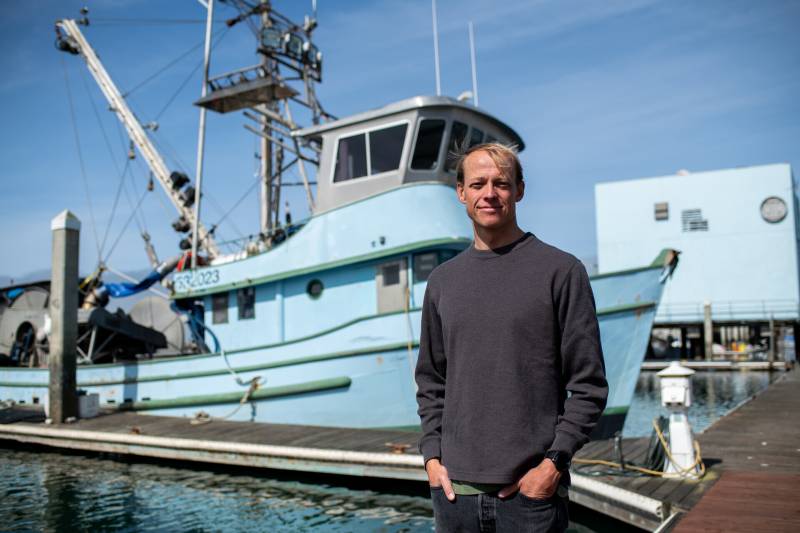The study also gave each food an environmental impact score based on the amount of greenhouse gas emissions created during their production. The more transportation required between production steps, the higher the greenhouse gas emissions. The researchers found that mussels, oysters and small fish scored as well as vegetables.
“Small fish like sardines, herring and anchovy are about as low in environmental impact, in terms of greenhouse gas emissions at least, as roots, or seeds or nuts,” said Koehn.
These small fish are captured using a type of net called a purse seine. Small purse seiner boats venture only about 10 miles away from shore and scoop entire schools of anchovy or other small fish into their nets using low-horsepower motors. When it comes to fishing, this method is one of the most fuel efficient.
Lobster, on the other hand, scored poorly. Trapping crustaceans requires a lot of motoring back and forth to set and check traps, burning up fuel in the process.
When the nutrient and emission scores were compared for all the foods in the study, carrots scored best overall. Beef scored the worst, despite being very nutritious, partly because of the large amount of greenhouse gas emissions produced while transporting the feed necessary to raise cows.
Salmon was one of the most nutrient-rich seafoods, coming in second after small fish. Wild-caught shrimp and farmed crustaceans scored nearly as badly as beef, due to high emissions from long-distance transportation.
Mike Conroy, executive director of the Pacific Coast Federation of Fishermen's Associations, recognizes the importance of promoting the nutritional value that seafood can provide while taking action to reduce environmental impacts.
“We don't think about the carbon footprint of the food that we're eating,” said Conroy. “Once that variable starts to get factored in, I think it'll only be another plus for the seafood industry.”
Conroy is frustrated by the onslaught of challenges the industry faces, including volatile ocean conditions and changes in where fish populations can be found due to climate change. But he is optimistic about sustainable fishing practices, especially when it comes to purse seiners and other low-carbon capture methods for nutritionally rich species.
“That fishery operates close to shore, close to ports,” said Conroy of harvesting species from the open ocean just off the coast. “Whether it be squid, anchovies or sardine, it’s among the greenest of all the commercial fleets out there.”
This doesn’t necessarily mean everyone has to chow down on sardines. This study is just one piece of the puzzle: Plans for a sustainable food system must account for what people actually eat in terms of culture and accessibility. As climate change drives natural disasters such as droughts that disrupt food production worldwide, prioritizing systems that produce the most nutritious and least environmentally harmful foods will only become more essential.
“We’ve got to have a lower-carbon diet, individually and as a population,” said Dave Love, senior scientist at the Johns Hopkins Center for a Livable Future. “We can engage all the other elements: the energy sector, the building sector, transportation — but if we don't work with food, we're not going to get to our climate targets.”
As the global food system is forced to adjust to new climate realities, recognizing that not all seafood is equal in nutritional value or environmental impact can help policymakers, food producers and consumers make better decisions for a more nutritious and sustainable future.

